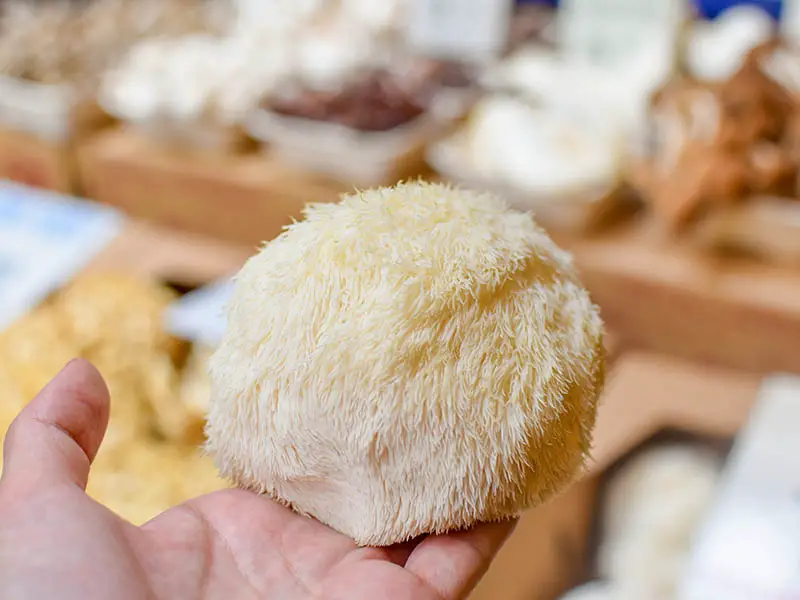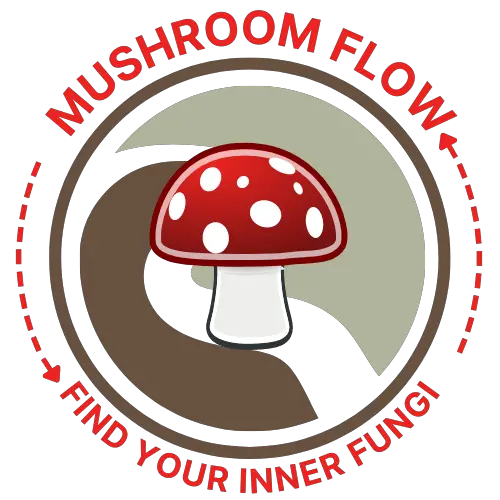If you are out shopping for lion’s mane mushrooms, how do you know they’re past their prime? Does yellowing or browning indicate the mushroom might be bad? Not necessarily. Colors other than the typical white mass do not necessarily indicate you have old lion’s mane mushrooms.
Yellowing near the middle of the lion’s mane mushroom means it’s mature and about to release spores. For best cooking results, harvesting before yellowing is recommended. Some pink in a Lion’s Mane mushroom is acceptable. A brown lion’s mane may be a sign of dryness or over-maturation.
Let’s take a look at the ways to tell if lion’s mane mushrooms are fresh by their colors, some preservation methods, and popular ways to enjoy this healthy and hearty mushroom!

What Color are Lion’s Mane Mushrooms?
Lion’s mane mushrooms begin life totally white and turn yellow or brown as they mature.
Lion’s Mane Mushrooms start as a small white or cream bump, expand outward into a ball shape, and develop dangling spines resembling a lion’s mane. Yellow or brown flesh or spines is usually an indication of overripeness, but may also be a lack of humidity.
In cooler climates, lion’s mane mushrooms may have a slight pink coloration which is perfectly normal. If there’s a greenish hue on the mushroom, the flesh was likely bruised but is still edible.
How Long do Lion’s Mane Mushrooms Last?
If you discover a little yellow in the middle of your lion’s mane mushroom, it is still edible. You can get a feel for when they might start going bad by some general timing.
- Whole mushrooms last for up to 10 days in the refrigerator.
- Sliced mushrooms last about 7 days in the refrigerator.
- Dried mushrooms last over a year, depending on how they are stored.
A healthy fresh white or cream lion’s mane mushroom should smell earthy and feel smooth and firm. If the lion’s mane mushroom becomes shriveled or slimy, toss them.
How to Keep Lion’s Mane Mushroom Fresh?
The key to freshness with lion’s mane mushrooms is keeping them dry. These guys gobble up moisture like a sponge. Store them in the refrigeration in an area that’s away from the cold airflow. If you have a crisper drawer, that’s ideal.
Keep lion’s mane in a paper bag or if using a food storage container, put a paper towel on the bottom and top to keep moisture away from the mushrooms. You can also freeze or dehydrate them for a long shelf life. If freezing, the mushrooms need to be cooked first.
Freezer Method
The recommended way to freeze lion’s mane mushrooms is after they’ve been sauteed in oil. Let them cool completely. Transfer the lion’s manes into a freezer-safe bag or container and date the outside. Check the seal on the container closely to avoid freezer burn.
You can alternatively blanch lion’s mane mushrooms for freezing. Put the cleaned mushrooms in boiling water for just over a minute. Drain them immediately and put them in ice water. Let the mushrooms drain thoroughly before freezing.
Drying Method
Generally, the best way to dry lion’s mane mushrooms is by using an oven or a dehydrator. Clean the mushrooms with a brush or cloth. Rinsing them is not recommended since they soak up water which is the opposite of drying. You want as little moisture as possible.
Slice the mushroom from top to bottom, making ¼” thick pieces. Put the slices on a dehydrator tray separated a bit to allow for air movement. It will take about 5 hours at 135F to dry them completely.
For the oven method, cover a baking sheet with parchment. Put the slices on the sheet, making sure they are not touching. Use your oven’s lowest temperature setting. It will take 2-4 hours (oven temperatures vary). Check them regularly. They should be cracker crisp when fully dehydrated.
Lion’s Mane Mushrooms – Culinary Uses
Now that you know the white, cream or slightly yellow color in your Lion’s mane means they’re ready to eat, you can start trying recipes. Lion’s Mane Mushrooms taste somewhat like shellfish. They’re delicate, tender, slightly sweet, and juicy. The bouncy texture is similar to seafood or meat, and it’s used as a substitute in vegetarian dishes or for folks who can’t eat shellfish.
Many cooks slice them and sautee them until lightly brown. They’re amazing in chowder. You can also add them to the following dishes:
- Broth
- Soup
- Sauces
- Tea
- Stew
- Roasted foods
- Pasta
- Skewers
Sometimes it’s hard to find fresh lion’s mane mushrooms. Your best substitute is Porcini mushrooms. Porcini has a woodsiness and rich texture similar to lion’s mane mushrooms.
Final Thoughts
The old adage “fresh is best” applies to mushrooms too. Depending on where you shop, Lion’s Mane mushrooms can cost between $8.00 and $35 a pound (sometimes even more). So, this mushroom is undoubtedly a delicacy. When you find fresh Lion’s Mane mushrooms, enjoy them in your favorite dishes!
